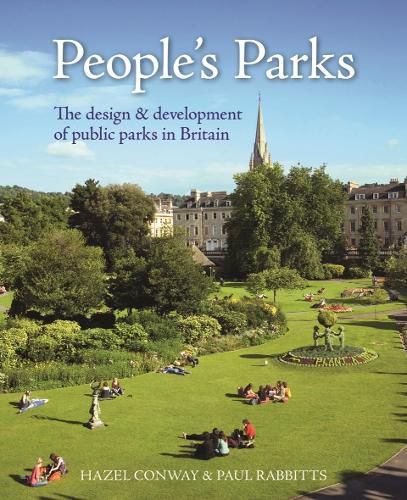Readings Newsletter
Become a Readings Member to make your shopping experience even easier.
Sign in or sign up for free!
You’re not far away from qualifying for FREE standard shipping within Australia
You’ve qualified for FREE standard shipping within Australia
The cart is loading…






People's Parks - The Design and Development of Public Parks in Britain' identifies the principal national and international influences on park development from the nineteenth century until the present, including their historical and cultural significance. Municipal parks made an important contribution to our urban environment, and they developed within a social, economic and political context which affected people's attitudes to recreation - what became known as 'rational recreation'. The promoters of parks wanted to encourage education and particular forms of recreation, and parks reflected this in their design, buildings, statues, bandstands and planting. This book is a thorough update and re-evaluation on Hazel Conway's influential book, published in 1991, adding and evaluating an extra 100 years of history, through the Victorian era, to the war years, the impact of the Garden Cities movement, and the great decline of parks from the 1970s onwards. The impact of the Heritage Lottery Fund's urban parks programme from the 1990s is covered, along with that of austerity and the Covid pandemic. The book concludes by evaluating the role of parks today and potential for the future.
$9.00 standard shipping within Australia
FREE standard shipping within Australia for orders over $100.00
Express & International shipping calculated at checkout
People's Parks - The Design and Development of Public Parks in Britain' identifies the principal national and international influences on park development from the nineteenth century until the present, including their historical and cultural significance. Municipal parks made an important contribution to our urban environment, and they developed within a social, economic and political context which affected people's attitudes to recreation - what became known as 'rational recreation'. The promoters of parks wanted to encourage education and particular forms of recreation, and parks reflected this in their design, buildings, statues, bandstands and planting. This book is a thorough update and re-evaluation on Hazel Conway's influential book, published in 1991, adding and evaluating an extra 100 years of history, through the Victorian era, to the war years, the impact of the Garden Cities movement, and the great decline of parks from the 1970s onwards. The impact of the Heritage Lottery Fund's urban parks programme from the 1990s is covered, along with that of austerity and the Covid pandemic. The book concludes by evaluating the role of parks today and potential for the future.